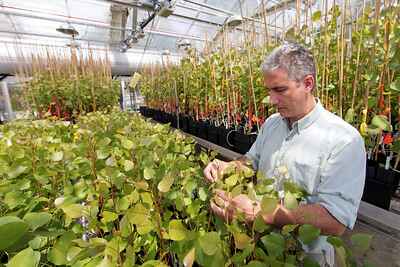5 Bioremediation Strategies Explained
Bioremediation strategies are; composting-based bioaugmentation, successive in situ and ex situ treatment, intrinsic phytoremediation by reforestation, bioremediation with continuous monitoring, and machine learning-enabled treatment.
These strategies represent the variable pathways that can be adopted for environmental remediation using biological materials and methods, depending on the specific conditions and needs of a given project.
This article discusses bioremediation strategies, as follows;
1). Composting-based Bioaugmentation (as one of the Applicable Bioremediation Strategies)
The process of bioaugmentation involves adding microorganisms to a polluted medium, in order to facilitate effective biodegradation of pollutants, reversal of the environmental impacts of pollution, and remediation of the medium [9].
Composting in bioremediation is the cultivation of microbes through deliberate accumulation of biomass that is allowed to decompose.
The more common context in which composting is applied is that of agriculture, where is functions as a sustainable agricultural practice for soil conservation, water conservation and fertility enhancement.
In bioremediation, it is more common to implement composting by using the degraded medium (such as polluted soil) as the substrate or biomass for compost formation, so that pollutants can break down as microbes build-up in the compost pile.
However, composting-based (or compost-based) bioaugmentation is a different approach, in that the compost is produced using biomass that is not necessarily from the degraded medium.
Rather than use the degraded medium to produce compost, in this case the compost is produced separately and introduced into the polluted medium as a source of microbes to augment already-present populations.
Though not very common, the approach can be very cost-effective, and may yield positive results, especially in cases where the pollutants are all biodegradable with minimal levels of persistence.
Composting-based bioaugmentation is also a highly-versatile strategy, because it can be implemented under various conditions and with various types of bioremediation that include in situ, ex situ, in situ, extrinsic and intrinsic.
As earlier hinted, the dynamic between bioaugmentation and composting is bi-directional and can occur in reverse; with bioaugmentaion being used to improve the effectiveness of compost formation, by adding microbes from external sources, to the compost pile [1].
For composting-based bioaugmentation, the strategy has been successfully applied in cases that involve pollutants that include polycyclic aromatic hydrocarbons (PAHs) [11].

2). Successive In Situ and Ex Situ Bioremediation
Although ex situ and in situ bioremediation are separate types, and involve distinctive techniques from each other, they can be combined and implemented successively (or even simultaneously) in an integrated bioremediation framework.
Such an approach as this is necessary in cases where degradation has occurred through highly-complex and interconnected dynamics. Examples of such cases include those where there are multiple contaminants, highly-severe and persistent pollution, high mobility and spread of degradation, and simultaneous degradation of more than one medium; like soil and groundwater.
The integrated in situ/ex situ bioremediation strategy usually requires much expertise and careful consideration of detail, and is likely to be expensive.
Its application must therefore be based on the availability of all resources required for the procedure, as well as the suitability of both ex situ and in situ techniques for the site.
Very often, the second criteria is met because ex situ and in situ bioremediation have both proven to be effective for a wide range of environmental conditions [2].
Where a simultaneous-implementation approach is too-demanding, unfeasible or unsuitable; ex situ and in situ remediation can be implemented successively in alternation.
An illustration of this bioremediation strategy is the alternation of excavation (with landfilling, composting, bioreactor-based treatment) and in situ microbial treatment on a successive and continuous basis till a degraded site is restored.
Where multiple media are degraded, one type of bioremediation can be used to treat a given medium while another can be used for a different medium; such as ex situ for soil and in situ for water.
Although complex, the strategy can offer significant flexibility if implemented with the required resources.
3). Intrinsic Phytoremediation by Reforestation (as one of the Applicable Bioremediation Strategies)
Basically, phytoremediation is a type of bioremediation that relies on plants to serve as tools for the reversal of degradation.
While all the parts of a typical plant can participate in the process, the roots play a major role.
Plant roots play a role in phytoremediation by actively absorbing chemical constituents of pollutants in soil, which are taken up by the plant for its metabolism [4].
Aside this direct role, plant roots also facilitate carbon sequestration, and other plant parts may contribute to facilitating water conservation, both practices being instrumental toward the general improvement of soil/environmental health..
Mechanisms or strategies that plants use for phytoremediation include; phytoextraction, phytostabilization, phytotransformation/phytodegradation and rhizofiltration [12]. These can also be referred to as phytoremediation techniques.
Of the above, phytodegradation and phytoextraction are very important, as they lead to the breakdown and removal of pollutants respectively.
The difference between phytoextraction and phytodegradation is in their perspective, mechanism and context; where phytoextraction is assessed from the perspective of reduction in pollutant concentration through absorption by plants; while phytodegradation is assessed from the perspective of chemical compositional changes that occur as plants absorb ions from contaminated soil or water.
Basically all phytoremediation techniques use plant roots, although the most obvious ones are phytostabilization and phytoextraction.
Intrinsic phytoremediation by reforestation or re-vegetation is a bioremediation strategy that relies heavily on natural growth of plants, to restore degraded terrains.
The strategy is recommendable for cases involving degradation of vast areas of land or water in remote and uninhabited areas. It is also applicable where degradation is not too severe as to require complex measures.
While it poses the least economic, social and environmental demands, intrinsic phytoremediation by reforestation is a slow process since it does not involve any significant human effort to facilitate the process.
The advantages of this approach include its versatility, which allows it to serve multiple purposes such as erosion control, and mitigation of desertification, among others [10].
Phytoremediation has the advantage of encompassing microbial remediation and mycoremediation, due to the presence of fungi and bacteria around plant roots [4].

4). Bioremediation with Continuous Monitoring
Continuous monitoring is recommendable as part of a bioremediation strategy where an iterative approach is being used; such as for cases involving unfamiliar pollutants, high complexity, and/or novel equipment and techniques.
Through monitoring, the effects of a given material or method can be assessed in the course of a bioremediation project, in order to facilitate optimal decision-making as to what tools and techniques are best for the project in concern.
One of the criteria or parameters that can be monitored to evaluate the trend of bioremediation is soil biological activity [8], since this metric is likely to change in consistence with the changes occurring on the site.
However, biological activity-based monitoring can only be effective if sufficient knowledge is available with respect to the organisms (mainly microbes) present, and the type of bioremediation being implemented.
Three types of bioremediation according to organism used are: phytoremediation, mycoremediation and microbial bioremediation; which utilize plants, fungi, and microbes like bacteria, respectively.
Measurement of toxicity can also be used to monitor developments on a bioremediation site [7]. Such measurements can be taken through periodic sampling and laboratory analysis.
While monitoring comes at a cost, it can help reduce the overall cost of large bioremediation projects in the long run, by preventing the wastage of resources on methods or materials that do not have the desired effect.
5). Machine Learning-Enabled Treatment (as one of the Applicable Bioremediation Strategies)
Various forms of technology are used in bioremediation, including bioengineering, data analytic technology, and artificial intelligence.
In general, technology helps with bioremediation by providing a means by which the process can be actively facilitated either directly on the site, or indirectly through data-based operations.
Machine learning and its advanced form; deep learning, are both AI functionalities that can be very useful in bioremediation.
The role of machine learning as part of an advanced, innovative bioremediation strategy, is multidimensional.
One of its most obvious dimensions is provision of a platform for efficient data-processing [6].
The concept behind machine learning involves neural network utilization whereby complex, multiple-layer data can be processed in real time.
This capability can help increase the overall efficiency of bioremediation, as well as to reduce the demand of remediation projects through process-automation.
Although it is data-centered, machine learning is a versatile technology with multiple potential applications in bioremediation that include simulation, monitoring, equipment control, and enzyme redesigning, among others [3].
Conclusion
Bioremediation strategies are;
1. Composting-based Bioaugmentation
2. Successive In Situ and Ex Situ Bioremediation
3. Intrinsic Phytoremediation by Reforestation
4. Bioremediation with Continuous Monitoring
5. Machine Learning-Enabled Treatment
References
1). Costa, L. A.; Costa, M. S.; S.; Damaceno, F. M.; Chiarelotto, M.; Bofinger, J.; Gazzola, W. (2021). "Bioaugmentation as a strategy to improve the compost quality in the composting process of agro-industrial wastes." Environmental Technology & Innovation 22(69):101478. Available at: https://doi.org/10.1016/j.eti.2021.101478. (Accessed 7 January 2023).
2). Dott, W.; Feidieker, D.; Steiof, M.; Becker, M. P.; Kämpfer, B. (1995). "Comparison of ex situ and in situ techniques for bioremediation of hydrocarbon-polluted soils." International Biodeterioration & Biodegradation, Volume 35, Issues 1–3, 1995, Pages 301-316. Available at: https://www.sciencedirect.com/science/article/abs/pii/096483059500040C. (Accessed 7 January 2023).
3). Dutta, K.; Khalifa, I.; Shitvakov, S. (2021). "New Trends in Bioremediation Technologies Toward Environment-Friendly Society: A Mini-Review." Frontiers in Bioengineering and Biotechnology 9:666858. Available at: https://doi.org/10.3389/fbioe.2021.666858. (Accessed 7 January 2023).
4). Gherghel, F.; Krause, K.; Felicia, G.; Krause, K. (2010). "Role of Mycorrhiza in Re-forestation at Heavy Metal-Contaminated Sites." Bio-Geo Interactions in Metal-Contaminated Soils Chapter: Role of Mycorrhiza in Re-forestation at Heavy Metal-Contaminated Sites. Available at: https://doi.org/10.1007/978-3-642-23327-2_10. (Accessed 7 January 2023).
5). Gleba, D.; Borisiuk, N.; Borisiuk, L.; Kneer, R.; Pouley, A.; Skarzhinskaya, M.; Dushenkov, V.; Logendra, S.; Gleba, Y. Y.; Raskin, I. (1999). "Use of Plant Roots for Phytoremediation and Molecular Farming." Proceedings of the National Academy of Sciences 96(11):5973-7. Available at: https://doi.org/10.1073/pnas.96.11.5973. (Accessed 7 January 2023).
6). Kumar, P. T. K.; Vinod, P. T.; Phoha, V. V.; Iyengar, S.; Iyengar, P. (2011). "Design of a smart biomarker for bioremediation: A machine learning approach." Computers in Biology and Medicine 41(6):357-60. Available at: https://doi.org/10.1016/j.compbiomed.2011.03.013. (Accessed 7 January 2023).
7). Mansouri, A.; Cregut, M.; Jouanneau, S.; Thouand, G.; Durand, M-J. (2022). "Evaluation of Biomonitoring Strategies to Assess Performance of a Bioremediation Bioprocess," Sustainability, MDPI, vol. 14(17), pages 1-17, September. Available at: https://ideas.repec.org/a/gam/jsusta/v14y2022i17p10932-d904462.html. (Accessed 7 January 2023).
8). Margesin, R.; Zimmerbauer, A.; Schinner, F. (2000). "Monitoring of bioremediation by soil biological activities." Chemosphere. 2000 Feb;40(4):339-46. Available at: https://doi.org/10.1016/s0045-6535(99)00218-0. (Accessed 7 January 2023).
9). Nzila, A.; Razzak, S. A.; Zhu, J. (2016). "Bioaugmentation: An Emerging Strategy of Industrial Wastewater Treatment for Reuse and Discharge." International Journal of Environmental Research and Public Health 13(9):846. Available at: https://doi.org/10.3390/ijerph13090846. (Accessed 7 January 2023).
10). Prieto, M. J.; Acevedo, S. O. A.; Prieto, G. F.; González, N. T. (2018). "Phytoremediation of soils contaminated with heavy metals." Biodiversity Int J. 2018;2(4):362-376. Available at: https://doi.org/10.15406/bij.2018.02.00088. (Accessed 7 January 2023).
11). Wu, M.; Guo, X.; Wu, J.; Chen, K. (2020). "Effect of compost amendment and bioaugmentation on PAH degradation and microbial community shifting in petroleum-contaminated soil." Chemosphere 256(1–3):126998. Available at: https://doi.org/10.1016/j.chemosphere.2020.126998. (Accessed 7 January 2023).
12). Yan, A.; Wang, Y.; Tan, S. N.; Yusof, M. L. M.; Ghosh, S.; Chen, Z.(2020). "Phytoremediation: A Promising Approach for Revegetation of Heavy Metal-Polluted Land." Frontiers in Plant Science 11. Available at: https://doi.org/10.3389/fpls.2020.00359. (Accessed 7 January 2023).


